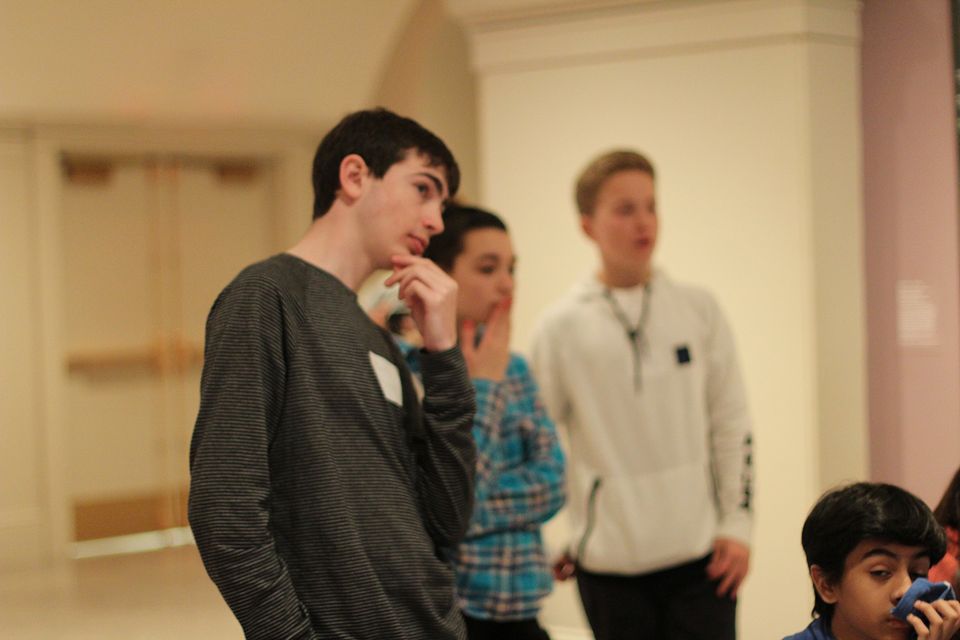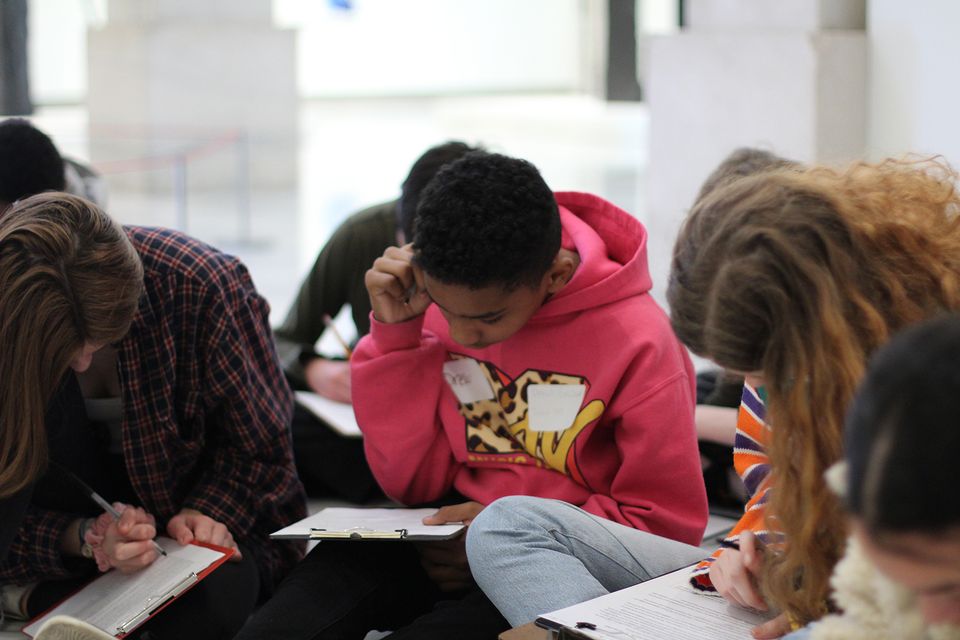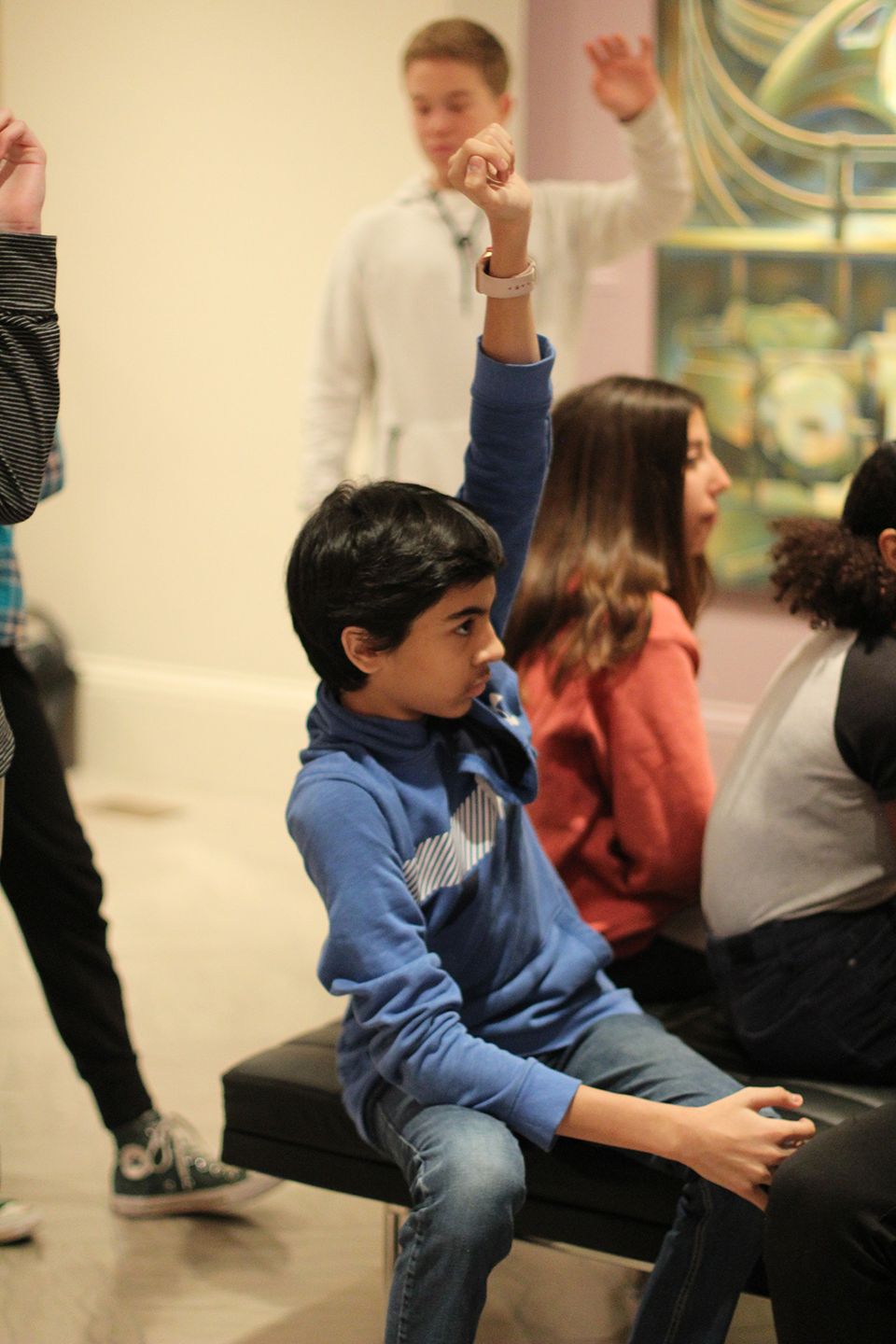
Mark Newport, Batman 2, 2005, acrylic and buttons, Smithsonian American Art Museum
Essential Questions
- How can getting to the heart of issues help deepen our understanding of them?
- How do the big conceptual ideas that lie at the heart of a body of content help us better understand the content?
- How can the details of the content help us to better understand big conceptual ideas?
- How can getting to the big ideas at the heart of the content help us learn more successfully?
Arc of Learning
(70 minutes)
- What’s Going on in This Artwork?
- Another Way to Look
- Optional: Metacognitive Break
- About the Artwork
- Optional: Ekphrastic Poem
- What Lies at the Heart?
- Why Does This Matter to Me? My Community? The World?
- Reflection
Observe and Interpret
These learning experiences serve as the foundation of the unit. Differentiating in this step between looking (observation) and thinking (interpretation), there are opportunities to refine students’ vocabulary and reinforce reasoning with evidence.

Teaching Moves
Beginning with close looking, students document their observations of an artwork through sketching and writing. Here, the teacher might challenge students to find the most creative or evocative labels to describe elements of the artwork. Students then interpret the artwork based on their observations using a thinking pattern (Claim-Support-Question), which invites students to think about what the artwork means and to provide an explanation for the artwork.
Create an Ekphrastic Poem
Students may find that their earlier, independent exploration of the artwork has prepared them to receive additional information. Their earlier thinking is likely to provide a useful foundation upon which new information can be layered. This set of experiences, one of them an optional ekphrastic poem, invites students to incorporate new information into their current understanding.

Teaching Moves
Having captured the keywords and phrases from a text about the artist, students synthesize the information they have learned so far in an ekphrastic poem. Ekphrastic poetry responds to an artwork with vivid descriptions and explanations of deeper meanings. This learning experience challenges students to synthesize earlier steps and distill the meanings gathered from close looking, interpretation, and background text.
Capture the Heart, Connect to the World
This final set of learning experiences invites students to identify big concepts and themes addressed by the artwork. Identifying the big concepts and themes make it possible for students to transfer learning gleaned from the artwork to understanding local, national, and even global issues. Reflecting upon this process will help students to use the pattern of thinking in other areas, including the world around them.

Teaching Moves
Drawing upon the thinking and documentation from earlier learning experiences, this set of activities begins with students’ reassessment of their earliest interpretations. In light of new information, they are invited to identify the core concept of the artwork using a thinking pattern (I used to think... Now I think...). Students then consider why the core concept matters first to themselves, then to their community, and finally to the world. Students finally reflect on other situations in which getting to the heart of the matter would deepen their understanding of other complex ideas, events, or texts.















